A Stroll with William Mowbray Scott through Milan
No apologies for returning to Ed Hill’s wonderful podcast “A Grand Tour with my Great Great Grandad” as the basis for another walk around Milan. By episode 28, Ed’s Great Great Grandad William Mowbray Scott has by now parted company with his employer the Railway Company and is taking some time off to describes some of the sights of Milan. In the first part of the podcast, he describes a walk around the Western part of the city of Milan (which we will return to ) , but here we are following a walk William made around the Eastern part of the city just inside the Spanish Walls. As usual, he proves to be an engaging and interesting guide to 1840s Milan ( with the help of Ed’s additional research) . Just for some context, William was in Milan when it was under Austrian occupation some five or six years before the Milanese somewhat unsuccessfully rose against their foreign occupiers. As will be noted, William passes several deconsecrated or abandoned churches, which are being used as ammunition dumps, barracks, and storehouses.
William’s walk starts at the remains of the Spanish Walls ( which you can get to from the Porta Romana metro station walking up via Monte Nero ) , where the remains of the Spanish Walls can be seen in a small park.
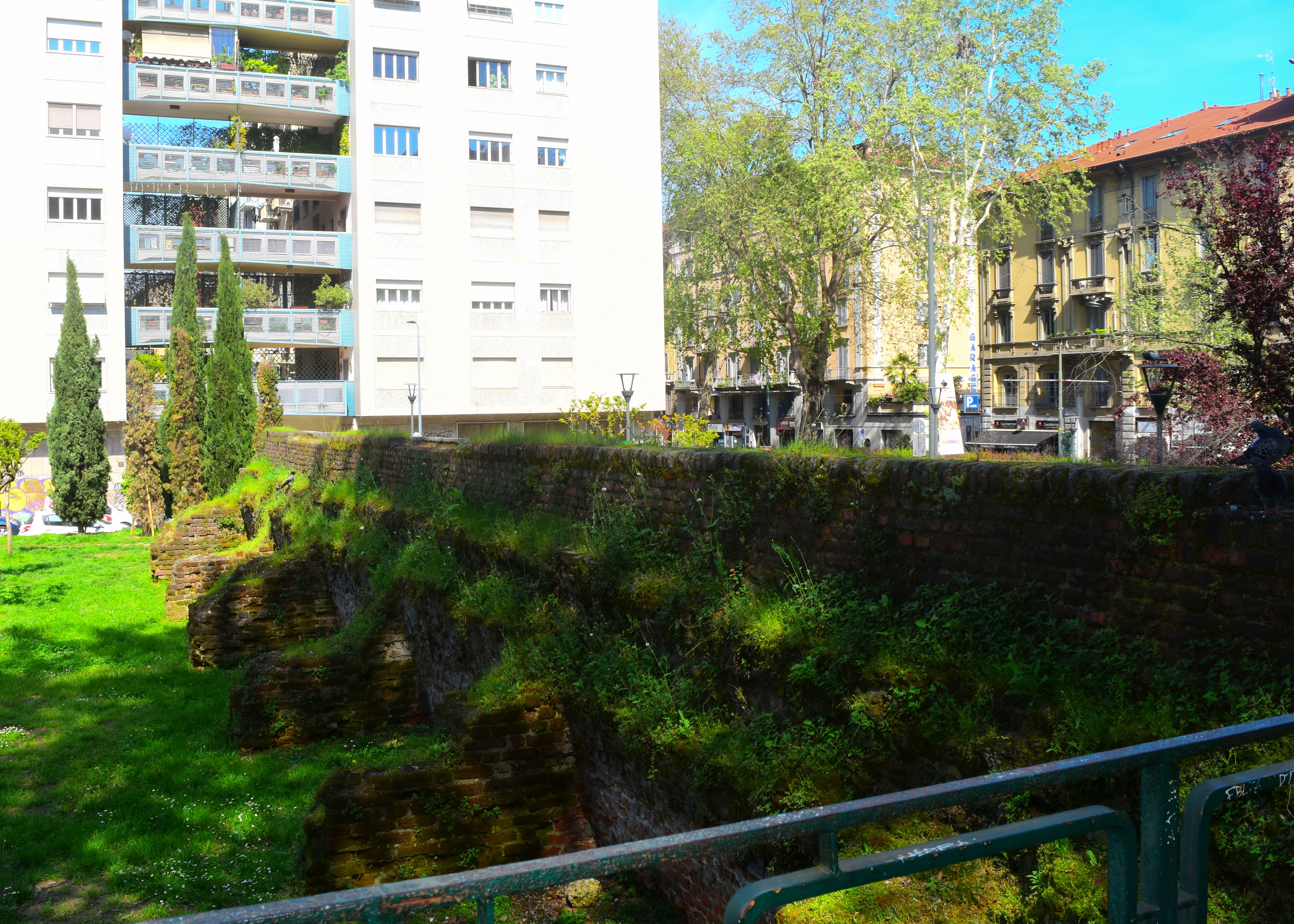
The remains of the Spanish walls
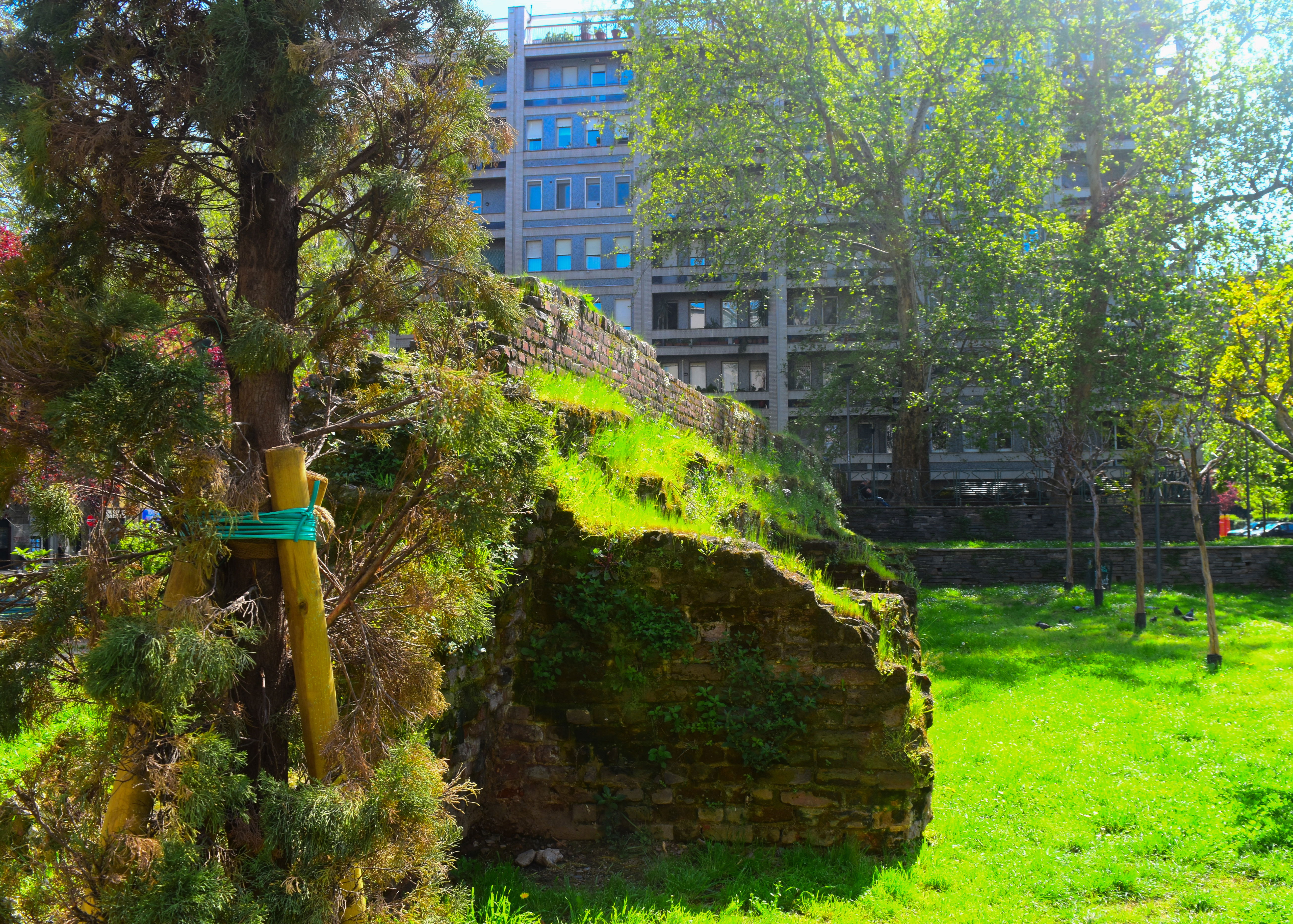
The remains of the Spanish Walls - via Monte Nero
At this point it is worth a small diversion of about 100 yards up via Monte Nero to number 48. Since we are also following the Stolpersteine ( the stumbling stones) of Milan, there happens to be one readily accessible here at via Monte Nero 48. The stone is just outside the front door and commemorates the deportation of Otello Salvatore Braccialarghe during the Nazi-Fascist occupation of Milan.
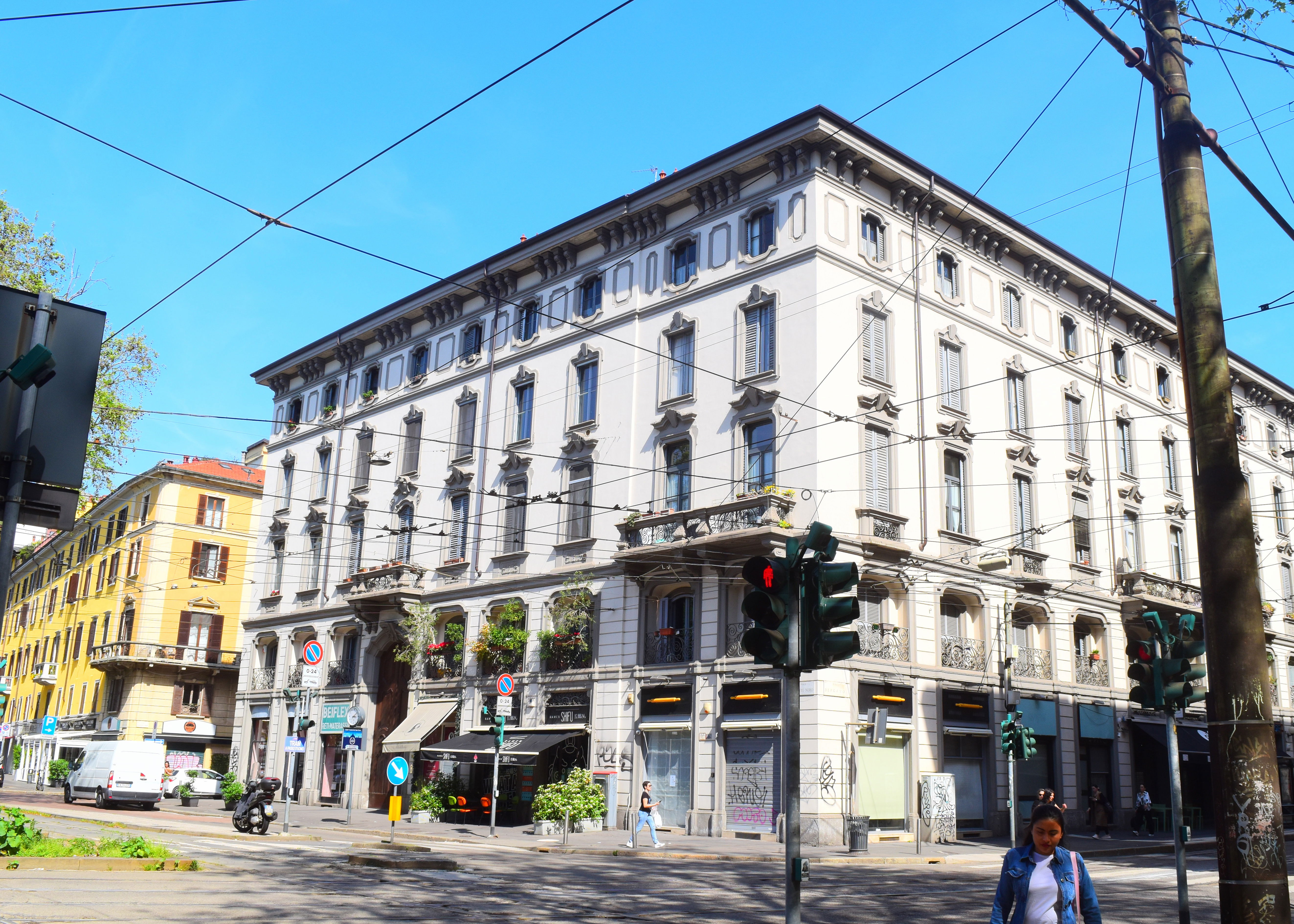
Via Monte Nero 48- former home of Otello Salvatore Braccialarghe
Otello was born in Macerata on 27 May 1880, son of Angela Romitelli and Vito Braccialarghe, a tinsmith worker of firm anarchist faith. Otello Salvatore grew up with the family ideals; his older brother Comunardo, also joined the anarchist movement and in Milan formed the section of the International Antimilitarist Alliance, organizing, in 1904, the general strike in protest against the massacres of Buggerru and Castelluzzo. ( on 4 September 1904, troops called in by the mine bosses had shot dead three striking miners in the Sardinian mining town of Buggerru, followed by the Carabinieri firing on protesting peasants in the Sicilian town of Castelluzzo) As early as 1898, Otello was reported to the central political register with the qualification of 'anarchist'. He moved to Milan, where he worked as a brasssmith and together with Giovanni Bonacina and Arturo Ganosa started Bonacina G.&C, an artistic foundry based in Via Fogazzaro, 21. Otello married Erminia Piacentini (born in 1882) with whom he had two children: Arturo, born in 1908, and Armando, born in 1909.
Following the Italian armistice on 8 September 1943 he carried out partisan activity in the 'Street Cell', raising funds to subsidize the clandestine struggle and distributing the communist newspaper Avanti in the factories of Brianza. He was picked up and imprisoned in San Vittore Prison in Milan on the night of 17 and 18 August 1944, and deported to Bolzano and from here, together with his foundry partner Giovanni Bonacina, he was transferred to the Flossenbürg concentration camp where he died on 2 October 1944.The Stolpersteine commemorates his last residence in Milan before he was taken away to be murdered,
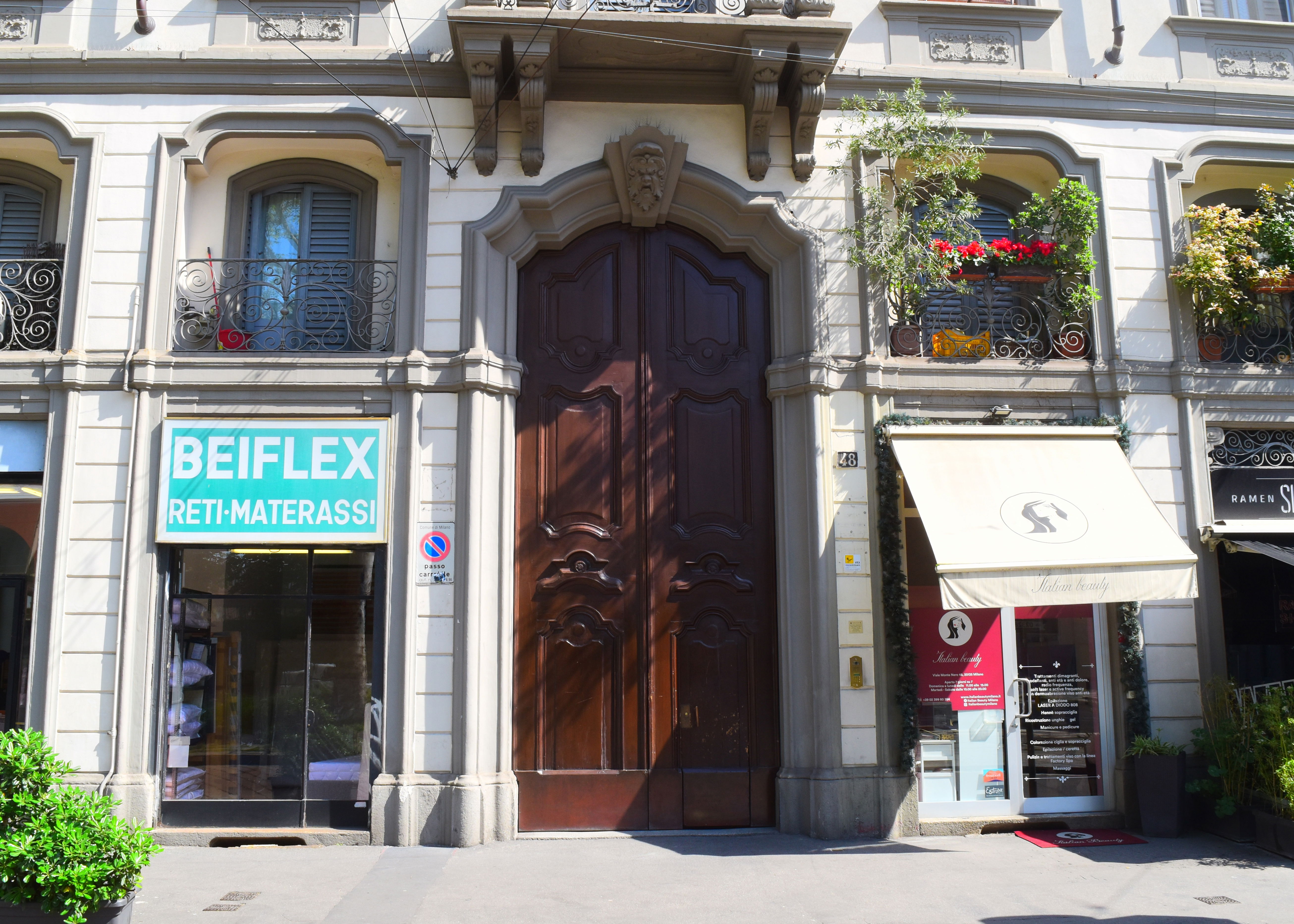
Otello was taken away by the Nazi- Fascists in 1944
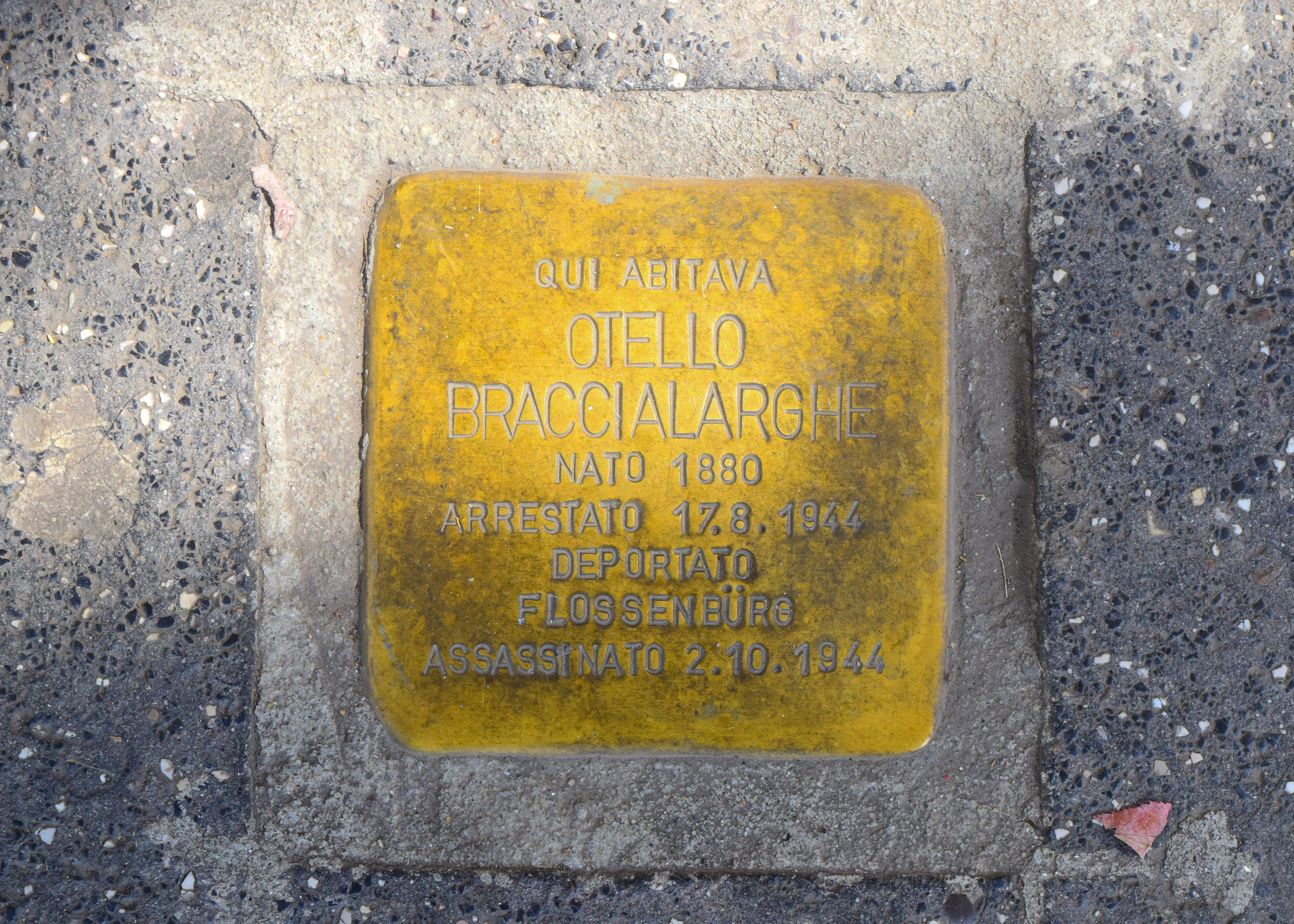
The Stolperstein commemorating Otello
Having had a look at this poignant bit of modern history , we can resume William’s trip and cross the road to the Rotonda della Besana, originally known as the Foppone della Ospedale Maggiore, Foppone derives from the dialect word foppa or fossa in Italian , literally meaning pit. So the Foppone was the hospital’s burial pit. Originally the Ospedale had its own cemetery , known as the Brugna which was outside the hospital near the Naviglio canal. As can be imagined, a burial site near the hospital and a canal, was not perhaps the best idea and the residents complained bitterly to the authorities about the miasma – the smell and the ensuing hygiene problems. So, the hospital purchased a new piece of land, by the side of the church of Santa Maria della Pace, right at the edge of the city within the Spanish walls.
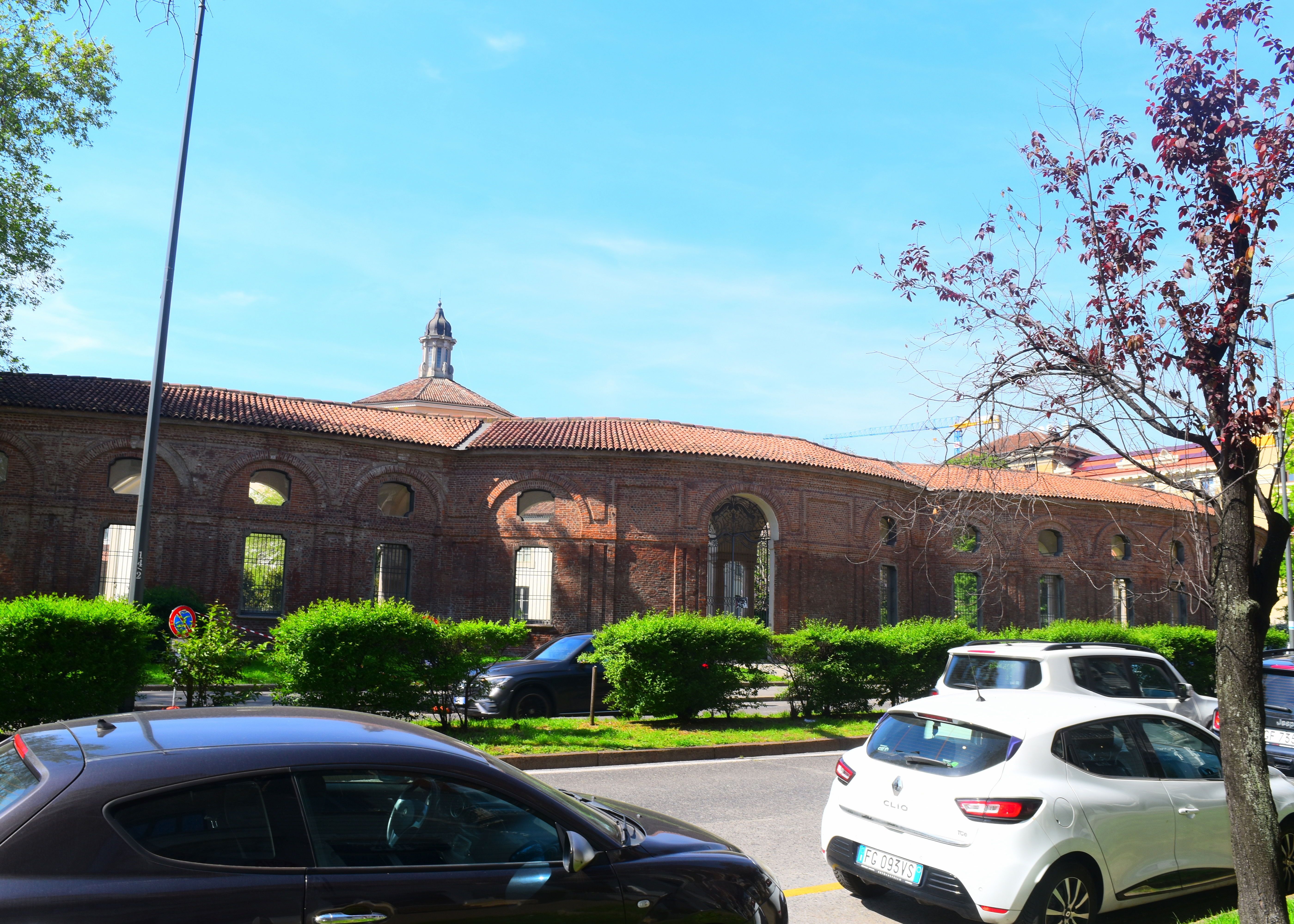
The Rotonda della Besana

The former cemetery in the Rotonda
They built a covered cemetery, connected to the hospital by a new road, the via San Barnaba. This allowed the discreet and quick transfer of corpses from the hospital to the cemetery. Construction of the new cemetery finished in 1697 and the first burials commenced. Unfortunately, it did not really resolve the sanitary issues and in 1792 it was closed with new Austrian Sanitary legislation decreeing that henceforward burials should take place outside the city walls. When the French temporarily replaced the Austrians as occupiers of Milan, they entertained the idea of turning the Rotonda into a pantheon for the distinguished of the Kingdom of Italy.
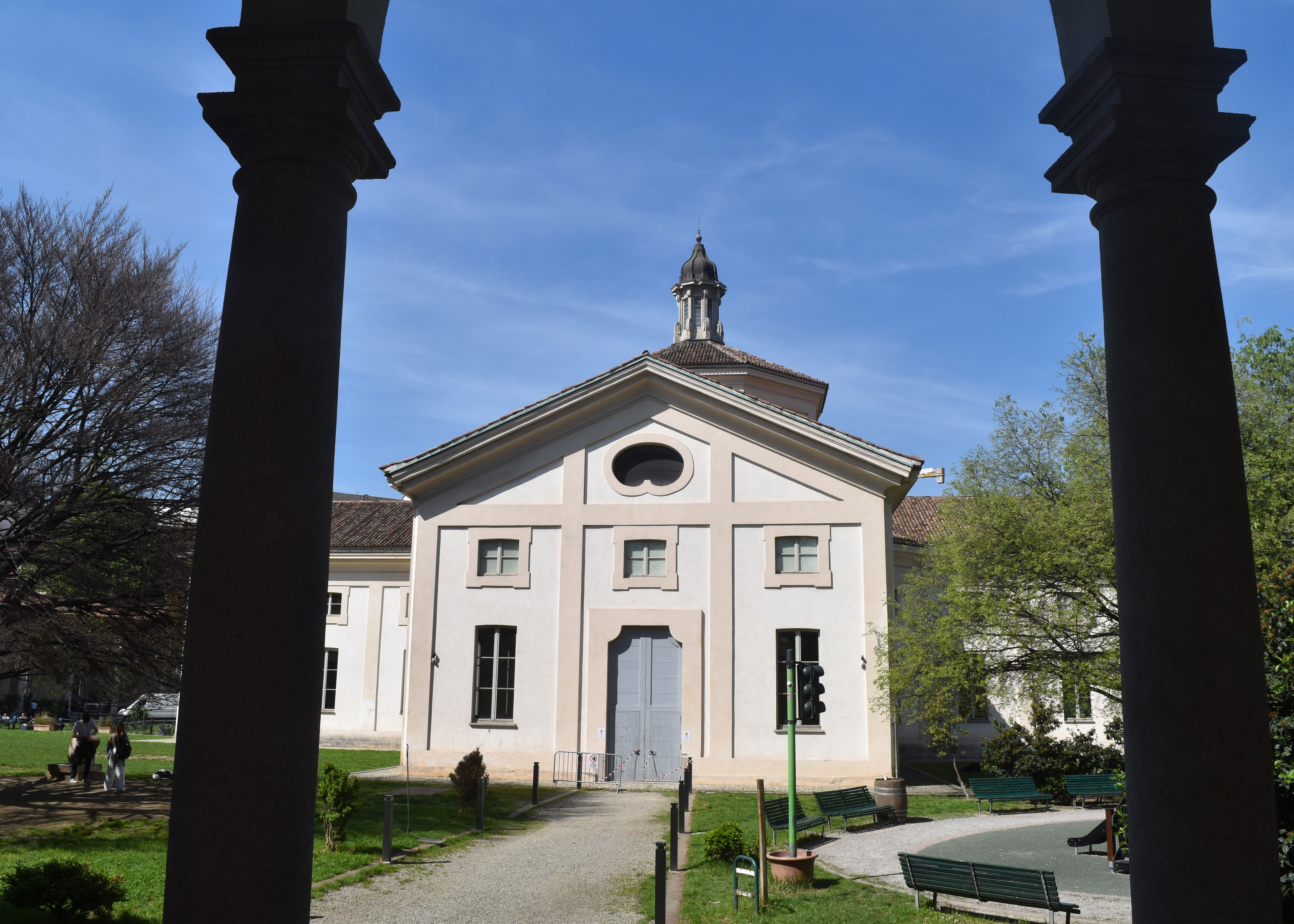
The Church in the centre of the Rotonda, now a museum
When the Austrians returned in 1815, they obviously shelved that idea. Thereafter the Rotonda found various uses as a barracks and then finally as the hospital laundry. Somewhat disturbingly , the corpses remained and in 1906 the authorities determined to empty the cemetery , which involved transporting the remains of some 100,000 people to the cemetery at Musocco for reburial. Even considering that the last burials had been in 1792, the idea of transporting the remains several miles across Milan to a new cemetery must have been somewhat daunting. So presumably when William visited in the later 1840s it was in use as a hospital laundry, with some relativity fresh ( 50-year-old corpses) under the ground or in the vaults.
Leaving the Rotonda, William headed back towards the centre. He passed by another church which he described as walled up and abandoned. This was Santa Maria della Pace which had been deconsecrated some 45 years previously in 1805. The church had been constructed back in 1476, with funding from Bianca Maria Visconti and her son Galeazzo Maria Sforza. It was designed by the architect Guinforte Solari , who was responsible for numerous Milanese churches, and for his work on the Ospedale Maggiore , the duomo and the Certosa of Pavia.

The view down via San Barnaba.

Santa Maria della Pace
The inside of the church was well decorated and included frescoes by Bernardino Luini and Gaudenzio Ferrari. When the church was deconsecrated, the frescoes were removed and transferred to the Brera gallery ( they had already gone when William passed by) , where they can still be seen today in a reconstruction of the St Joseph Chapel.
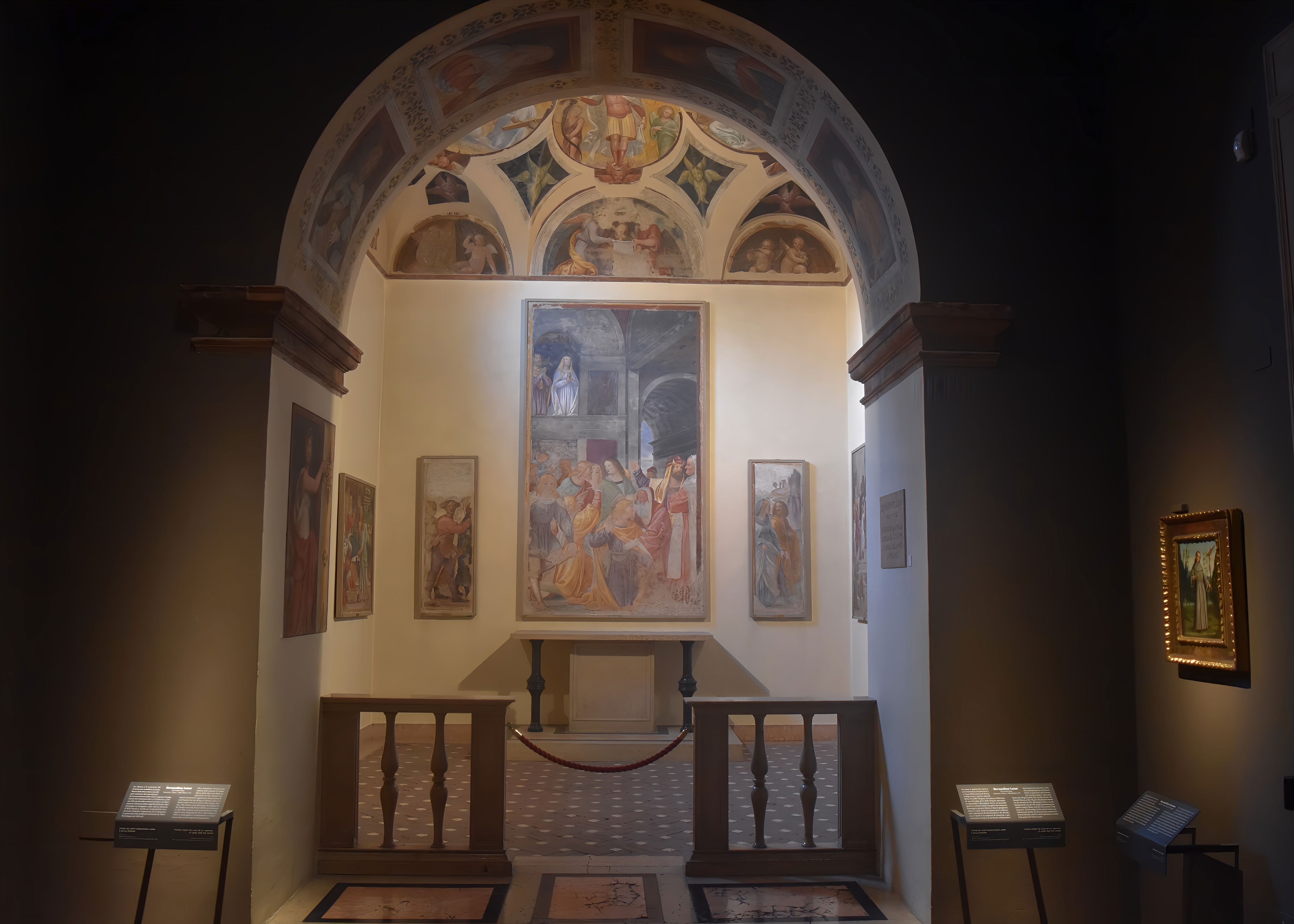
Bernardino Luini's frescoes from Santa Maria della Pace reconstructed in the Pinacoteca Brera
Following its deconsecration, the church was used as an ammunition store, a hospital, and a riding stable. So William’s description is pretty accurate. In later years , the church was acquired by the wealthy Bagatti Valsecchi family who founded an auditorium there , the Salone Perosi. This did nor prove to be a great financial success and the church passed to the sisters of Santa Maria Ripartrice and reconsecrated. Although the church has been extensively renovated , you can still get an idea of the original Lombardi Gothic style , with the brickwork similar to that which you can see in the remaining parts of the Ospedale Maggiore.

Remaining party of the Ospedale Maggiore
Further down the road, William describes another church, San Barnaba. This gave its name to the via San Barnaba. Although the church was of relatively modern construction, the site was supposed to be historic. San Barnaba was an Apostle , who apparently travelled from Antioch to Cyprus and then to Rome and Milan propagating the gospels. In tradition , he is supposed to have reaved Milan around 53CE and started converting the Milanese. San Barnaba is mentioned in the Acts of the Apostles, well at least until he reached Cyprus. His arrival in Milan is rather more legendary.
From San Barnaba , William’s walk took him back towards the Ospedale , along the strada dell’ospedale and towards the via San Sofia which bordered the Naviglio. William describes the school for abandoned and destitute girls. This was the Monastery complex fronted on the Naviglio. Collegio della Vistazione ( detto Santa Sofia). It had been , established by the ubiquitous San Carlo Borromeo for the Ursuline Sisters in 1576, to care for girls who had been orphaned during the plague of Milan of that year. from 1713 it had been administered by the Madri della Vistazione ( the Salesians) still as an orphanage and school for girls. At the end of via San Barnaba, you can see the remaining walls of the old Ospedale Maggiore, in William’s day the road ( via Francesco Sforza) , was actually a canal , party of the Navigli which circled the medieval centre of Milan. The canal was covered over in the 1930s and to become a sort of inner ring road for Milan and the whole area was almost razed to the ground by British bombing in 1943, so the area would be hardly recognisable to William today.

via Santa Sofia
Nearby are the Basilica of San Calimero and San Nazaro, which unfortunately William does not mention visiting. From San Sofia , William then took a long walk in the other direction to the Northeast and the Chiesa Santa Maria della Passione, another notable church within the Spanish Walls.

Approaching Santa Maria della Passione
The first part to be built was the terminal part, consisting of an octagonal lantern to which eight chapels were connected, alternately with a semicircular or rectangular plan (1486). The primitive structure perhaps conceived by Giovanni Antonio Amadeo, but built by Giovanni Battagio, was therefore rebuilt. From 1573, at the request of Carlo Borromeo, the building was transformed into a longitudinal layout, more suitable for preaching. The naves were thus added, by Martino Bassi, and the Baroque façade (seventeenth century). It is a fine example of Milanese Baroque and well worth visiting.

The baroque front of Santa Maria della Passione
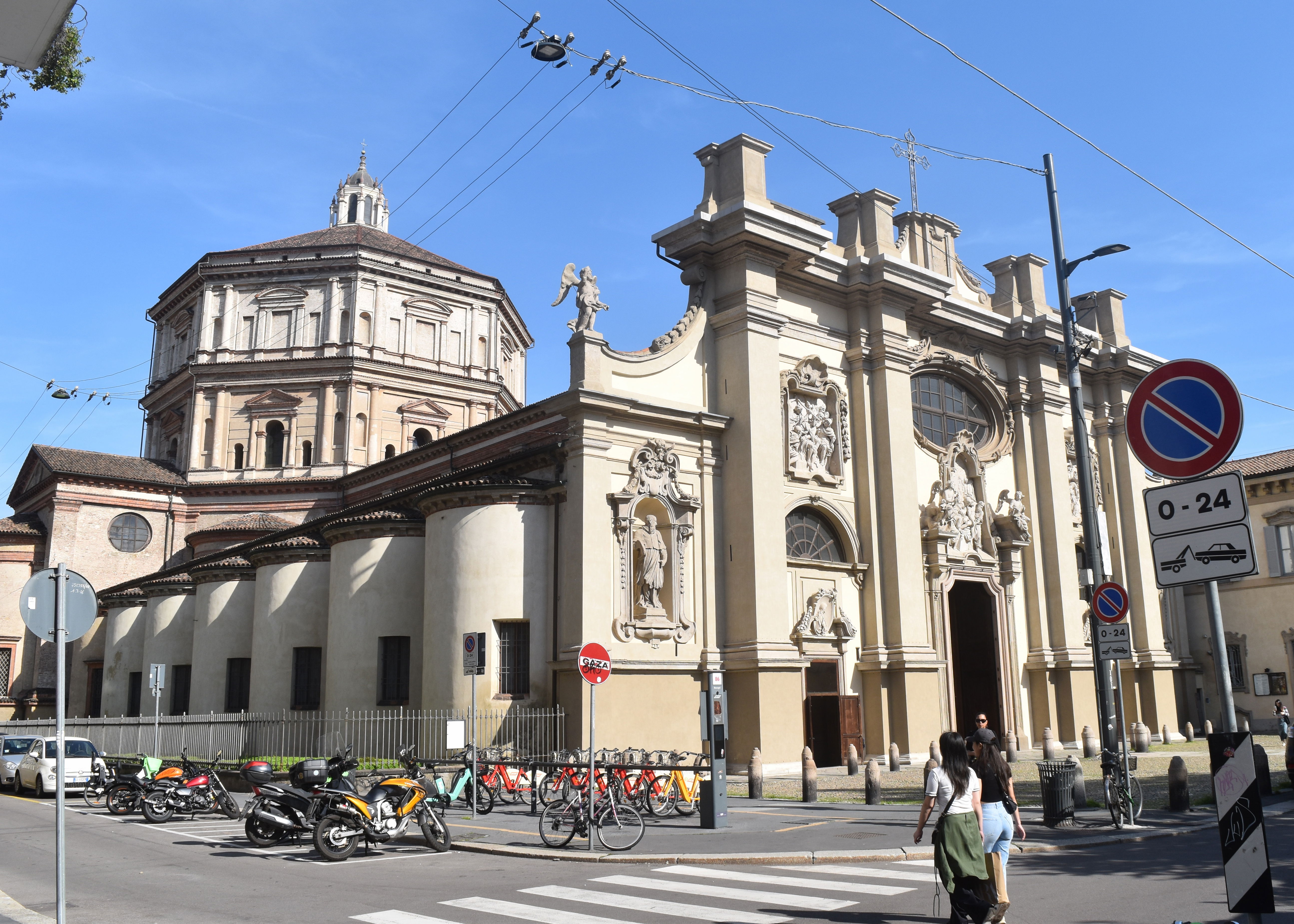
Santa Maria della Passione
From Santa Maria della Passione, William made the short walk up the Corso della Passione ( now the via Conservatorio) to the Prefecture. This was another former religious building, belonging to the order of the Humiliati. The Humiliati had a somewhat chequered history , their ability to acquire material possessions and their role in trade associations led to accusations of laxity and some serious abuses. Pope Pius V, commissioned St Charles Borromeo . Archbishop of Milan to clean up the Humiliati. He did it so rigorously that a conspiracy was launched against him and one of the Humiliati Girolamo Donati ( Farina) conspired to murder him.. Despite Borromeo’s plea for leniency Farina and his accomplices were tortured and executed. In 1571, Pius issued a Bill suppressing the Humiliati whose property was divided among other religious bodies. . In this case the building passed to the Somaschi Fathers. By 1792 it had been purchased by Giovanni Battisti Dotti, who sold it to the Napoleonic Italian Republic. From then on it served as governmental offices for the Napoleonic Kingdom of Italy and then the returning Austrians. At the time William passed it was the offices of the Austrian Governor of the Kingdom of Lombardy A few years later it was the scene of dramatic events during the Cinque Giornate of Milan – the five day uprising against he Austrian occupiers. More recently the building was where Mussolini holed up in his final days as the Allied Forces closed in on his puppet Italian Social Republic. Mussolini was in the prefecture from 18 to 25 April before setting out on his last fateful Journey along the shores of Lake Como and the filling station in piazza Loreto.

The Prefecture in Corso Monforte
Continuing his accurate and interesting descriptions, William walked from the Prefecture to what was then the accounting building of the Kingdom of Lombardy. At the time he was walking on via San Pietro , which again was along by the side of the Naviglio canal. Again the canal is now covered over and the road is now via Senato , but the archives are still there. Originally the seat of the Swiss College, the Palace underwent numerous architectural interventions and, at the same time, the relocation of various political and administrative institutions inside. After the suppression of religious orders by Joseph II, from 1786 the Palace was the seat of the Supreme Council of Government and then, under the Napoleonic Kingdom of Italy, of the Advisory Senate. It was this institution that left its name to the architectural complex and the road . The origin of the building dates back to 1608, when the cardinal of Milan, Federico Borromeo, wanted to erect the new seat of the Collegio Helvetico which was to be built on the ruins of an ancient monastery of Humiliati nuns “to accommodate Swiss students, coming from lands belonging to the diocese of Milan, who were prepared to carry out the function of parish priests in Valtellina and in the surrounding areas. Graubünden, lands "infected" with heresy", that is, into neighbouring Switzerland into which the “dangerous” ideas of the Protestant Reformation, especially Calvinist, had penetrated. The project was initially assigned to master builder Cesare Arano and engineer-architect Aurelio Trezzi. From 1613 the works were entrusted to Fabio Mangone, master builder of the Duomo of Milan, and then resumed around 1632 (after the plague of 1630 that took away the Mangone) by Francesco Maria Richini. Over the following decades there were further construction sites: in 1664 the Collegio factory purchased the adjacent monastery of San Primo with the church and later there were works of enlargement and embellishment of this church by Gerolamo Quadrio. In 1786, by decision of Joseph II of Habsburg, the Swiss college (which in the meantime had assumed neoclassical forms by Leopold Pollack[2]) became the seat of the Supreme Council of Government, and then, after the French invasion, became the seat of the Camera Bassa (Council of Juniors) of the newly formed Cisalpine Republic in 1797. [9] The events of the following years were troubled: it remained for a few months the seat of the Council of Juniors, then it became the seat of the Ministry of War of the Cisalpine Republic but in 1799, with the return of the Austrians, it was used as a warehouse. When the French returned under Napoleon after the battle of Marengo (1800), from 1802 it returned to being the seat of the Ministry of the Italian Republic first, and then of the Kingdom of Italy, to finally be used as the Senate Palace (hence the name by which the building is known) starting from 1809. The building continued to maintain this function until 1814 when, after the defeat of Napoleon, the Austrians returned and decided to use the building first as the Chancellery of the Austrian Imperial Army and, in 1817, as the State Accounting Office. The palace was still being used by Austrian tax Collectors when William visited.
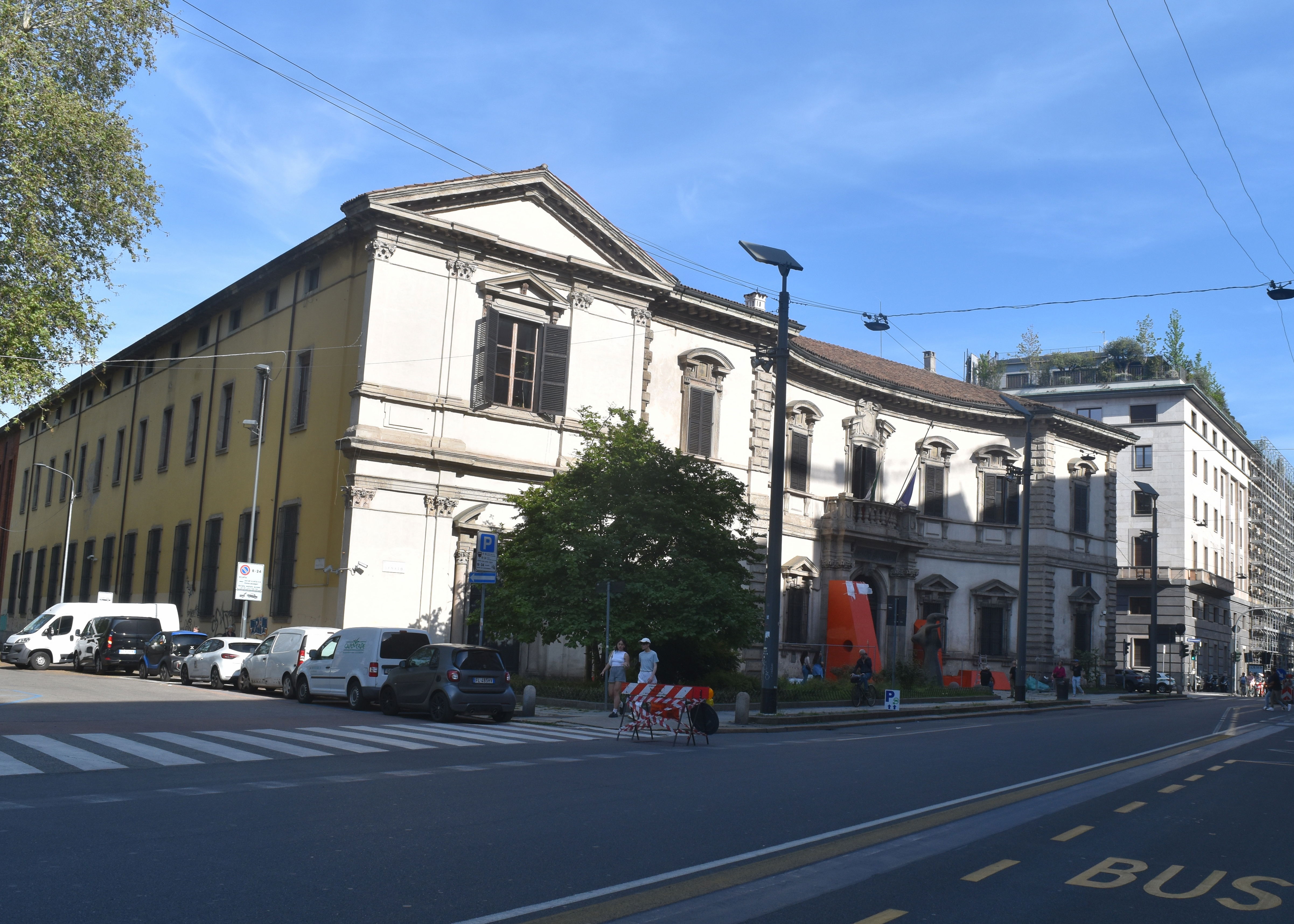
The archives in via Senato
As usual William proves an interesting and informative guide, when he visited large areas of this Eastern part of Milan, were still covered by small gardens, sparely populated with many open spaces and of course the canals. These days it is densely populated and full of apartment buildings and offices. But even after the canals had been covered over and the British bombers had done their worst, there is still enough left that William would probably be able to retrace his steps and recollect some of the sights he saw non the way.